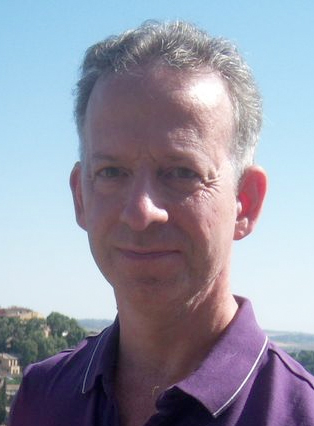Neighborhood Energy network - a NYC based eco-Activist group by Neighborhood Energy NetworkI am on the mailing list for the Neighborhood Energy Network, based in New York City. They regularly send out updates, presentation and movie announcements, and activist opportunities, to a large mailing list. This one, their latest, lists many useful sites on Climate Change, including how to deal with deniers.
It is presented here as an aid for those who want to be better informed and to answer critics.
Climate change is here, but it is clear there's more to it than just rising CO2 levels - indeed if that's all there was, it would be much easier to solve. Also talked about here is the effect of soot, some of which comes from increased shipping in the newly opened Arctic Route. I wish someone would study the effect of all those new ice breakers criss-crossing the arctic, and even the antarctic, slicing off hundreds of miles of vulnerable ice edges each time. Some of these ice shelves took decades to form, or longer; they cannot reform to the same density in time for the next shipping assault. What does this do to the overall ice coverage range?
This information will make people think. That's what it ought to do. That's what people
must do.
We recently passed an average of 400ppm of CO2. The president says to expect action on
climate change within weeks but we've heard this so many times before, and Kyoto, the most significant Climate Change agreement, was a dud because China and the United States, now the biggest emitters of CO2, never agreed to it, and other countries off-shored their polluting industries to countries not covered by the agreement. As the articles below make clear, we are not only far from where we need to be, we are moving in the wrong direction, and, using
worldwide averages, at an increasing rate too.
Perhaps the discussion we need to be having is what to do now that Climate Change is inevitable. Here in NYC, we are planning to build seawalls, making it more expensive to live in the most vulnerable neighborhoods (this is a major reversal from policies that encouraged people to build by the shore), and building out marshlands to mitigate more Hurricane Sandy type storms that are sure to come. This may be the only kind of Change We Can Believe In.
Neighborhood Energy network - a NYC based eco-Activist group by Neighborhood Energy Network
___________________________________________________________________________
|
|
|
educating the public, dealing with deniers
Websites:
RealClimate
is a commentary site on climate science by working climate scientists
for the interested public and journalists. We aim to provide a quick
response to developing stories and provide the context sometimes missing
in mainstream commentary. The discussion here is restricted to
scientific topics and will not get involved in any political or economic
implications of the science. All posts are signed by the author(s),
except 'group' posts which are collective efforts from the whole team.
This is a moderated forum.
Skeptical Science: Explaining climate change science & rebutting global warming misinformation
Scientific
skepticism is healthy. Scientists should always challenge themselves to
improve their understanding. Yet this isn't what happens with climate
change denial. Skeptics vigorously criticise any evidence that supports
man-made global warming and yet embrace any argument, op-ed, blog or
study that purports to refute global warming. This website gets
skeptical about global warming skepticism. Do their arguments have any
scientific basis? What does the peer reviewed scientific literature say?
****************
Climate change is not like other environmental problems
Movie Chasing Ice convinces woman of reality of climate change
Steve Colbert video
*********************************************************************
|
|
general information
We have known about climate change for 75 years: The Callendar effect - 1938
Chart showing where greenhouse gases come from
New York storm warnings unheeded.
More than three decades before Sandy hit, a state law and a series of legislative reports began warning New York politicians to prepare for a storm of historic proportions, spelling out scenarios eerily similar to what actually happened.
Study sees 5-degree C warming.
Levels of atmospheric
carbon dioxide are rising annually by around three percent, placing
Earth on track for warming that could breach five degrees Celsius (9
degrees Fahrenheit) by 2100.
Arctic ice shrinks 18 percent in a year, sounding climate change alarm bells. Sea
ice in the Arctic shrunk a dramatic 18 percent this year to a record
low, according to the official U.S. monitoring organisation in Boulder,
Colo. Scientists and environment groups said the fall was unprecedented,
and the clearest signal yet of climate change.
Black carbon, a/k/a soot, is one of the biggest causes of global warming, second only to carbon dioxide in slowly making parts of our planet uninhabitable
*********************************************************************
|
|
Effects
Too much carbon dioxide can have a negative effect on some crops
effect on fruit and nut trees
flooding in Andes
Tracking Impacts of Warming in the Andes
The
Andes in eastern Peru, with steep slopes and remarkable biodiversity,
are what one scientist calls a 'perfect laboratory' for studying the
effects of climate change. E360 contributor Elizabeth Kolbert trekked
there with researchers seeking to determine if tree populations can move
uphill fast enough to survive warming temperatures."
Megastorms could drown massive portions of California.
Portions of California's Central Valley have dropped 30 feet in
elevation because of extensive groundwater pumping, making
those areas even more prone to flooding. Huge flows of vapor
in the atmosphere, dubbed "atmospheric rivers,"
have unleashed massive floods every 200 years,
and climate change could bring more of them.
Scientific American
METHANE BUBBLES
last winter, russian
scientists surveying the arctic sea north of siberia were shocked to
discover hundreds of huge plumes where the sea is "frothing" with
bubbles of methane gas released from hydrates deep down on the
seafloor. Igor Semiletov of the Russian Academy of Sciences said his
research team discovered more than 100 plumes, and estimates there are
"thousands" over a wider area, extending from Russian mainland to East
Siberian Arctic Shelf.
sources:
www.ameg.me/
http://a-m-e-g.blogspot.com
www.regmorrison.id.au
http://regmorrison.edublogs.org
http://arcticclimateemergency.com/
http://en.rian.ru/analysis/20050822/41201605.html
www.dicksmithpopulation.com/wp-content/uploads/2010/06/climate-debate.pdf
http://globalwarmingisreal.com/2011/12/21/melting-arctic-ice-is-releasing-massive-amounts-of-methane/
www.hulu.com/watch/314532/nbc-nightly-news-with-brian-williams-as-siberian-permafrost-melts-methane-seeps-out
www.independent.co.uk/environment/climate-change/shock-as-retreat-of-arctic-sea-ice-releases-deadly-greenhouse-gas-6276134.html
********************************************************************* |
|
What to do
It's not all about CO2: A plan to help reduce short-term climate pollutants
Envisioning a real transportation revolution: thinking not just in terms of changes in widgets but systems also
Bank says climate action could halve worth of energy firm
For the world to
succeed in reaching targets for curbing greenhouse gases, a leading bank
says huge quantities of oil and gas reserves must be left unused. This
is the first time the financial sector has been warned by one of its own
that shares could plummet if the necessary action is taken to prevent
disaster.
Climate News Network , UK
Our Protest Must Short Circuit the Fossil Fuel Interests Blocking Obama
Bill McKibben on the need for fast action, in spite of the human preference for taking time to respond
Harvard Researcher Blames Environmentalists for Climate Inaction
Media should describe Sandy as the result of our climate experiment
The consequences of making a mistake on climate change are severe
New York's mayor outlines why he thinks climate action is important in the wake of Hurricane Sandy.
Experts warn of superstorm era to come.
Superstorm Sandy was no freak, say experts, but rather a hint of a
coming era when millions of Americans will struggle to survive killer
weather. How can cities defend themselves against such powerful enemies? Some of the ideas out there may surprise you. CNN
|
|
|
|
__________________________________________________________________
Contact Information
for Neighborhood Energy Network
~~~~~~~~~~~~~~~~~~~~~~~~~~~~~~~~~~~~~~~~~~~~~~~~
|
|







